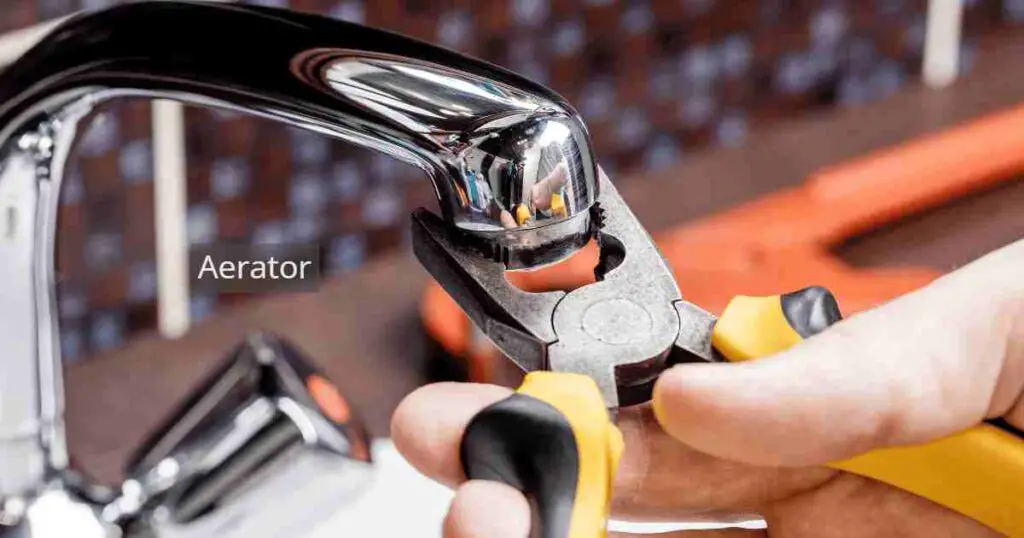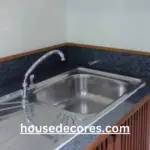Introduction:
Contents
- 1 Introduction:
- 2 Enigma of low water pressure in bathroom sinks
- 3 Suddenly, low water pressure
- 4 Bathroom sink without an aerator
- 5 Sink and Toilet
- 6 After replacing the faucet
- 7 Bathroom sink only
- 8 Sink and shower
- 9 One bathroom shower
- 10 Tips and tricks for preventing low water pressure
- 11 Conclusion:
- 12 FAQS:
- 12.1 Why is the water pressure low in one of my bathrooms?
- 12.2 Why is my sink suddenly losing water pressure?
- 12.3 What controls the water pressure in the bathroom sink?
- 12.4 Why is water pressure low in one faucet only?
- 12.5 How do I increase the water pressure in my bathroom?
- 12.6 How do I fix the water pressure in my sink?
- 12.7 How to increase water pressure in bathroom sink?
- 12.8 How to fix low water pressure in bathroom sink?
- 12.9 What causes low water pressure in only one faucet?
Having low water pressure in our bathroom sink is a common problem that messes up our daily routine and confuses us. It happens in different ways, like suddenly having less water or problems with hot water after changing the faucet. Figuring out what’s causing these issues is important, and this guide will help you understand and fix them. So, whether we’re surprised by less water pressure, puzzled about changes after putting in a new faucet, or feeling frustrated because both our sink and shower aren’t working well.
Enigma of low water pressure in bathroom sinks
Unraveling the mystery of low water pressure in bathroom sinks is crucial for ensuring a smooth and satisfying daily experience. This common household woe manifests in various ways, from a sudden drop in pressure to issues with complications after a faucet replacement. In our exploration, I aim to simplify the complexities surrounding low water pressure, shedding light on common clogged aerators and faulty faucets, as well as tackling more intricate plumbing problems affecting multiple fixtures.
Suddenly, low water pressure
The phenomenon of suddenly low water pressure in bathroom sinks is perplexing, disrupting the usual ease of daily tasks. Whether we’ve met with a mere trickle or a drop in force, understanding the reasons behind this abrupt change is essential. It could be a sign of various issues, such as problems with the main water supply. Investigating and troubleshooting these possibilities is crucial to pinpoint the root cause and implement effective fixes, ensuring that our bathroom sink consistently delivers the water pressure we expect.

Bathroom sink without an aerator
Experiencing low water pressure in a bathroom sink without an aerator is puzzling, as the absence of this common fixture raises questions about the root cause. In such scenarios, issues may lie deeper within the plumbing system, requiring a more thorough investigation. Potential causes range from pipe obstructions and water valve malfunctions to sediment buildup, each necessitating targeted solutions. Whether we’re dealing with a sudden decline in water pressure, scratching our heads over the absence of an aerator.

Sink and Toilet
Low water pressure in both our bathroom sink and toilet is a frustrating situation, disrupting daily activities. Whether washing our hands, the reduced water flow can lead to inconveniences and raise concerns about underlying plumbing issues. From potential blockages in shared plumbing lines to malfunctions in pressure regulators.

After replacing the faucet
Low water pressure in our bathroom sink after replacing the faucet is puzzling and frustrating. It’s not uncommon for this scenario to unfold, leaving us wondering why the water flow isn’t as robust as expected with the new fixture. The post-faucet replacement dilemma may stem from various factors, such as improper installation and debris in the plumbing lines. Whether we’re seeking professional help, understanding the nuances of this situation empowers us to address the problem effectively and restore our bathroom sink to its full water-flow potential.
Bathroom sink only
Practical solutions to restore optimal hot water pressure, ensuring a consistently warm and invigorating experience. Drawing a parallel with the elegance of a Terrazzo Bathroom, known for its design and functionality, we’ll gain insights to troubleshoot and banish the inconvenience of low hot water pressure from our bathroom sink.

Sink and shower
It’s a common issue that disrupts our daily routine. The reasons for this double trouble could range from clogged aerators to more complex plumbing problems affecting multiple fixtures. Understanding the specific scenario we’re facing is crucial, whether it’s a sudden drop in water pressure, issues after changing a faucet. Let’s tackle the challenge of low water pressure together and ensure our daily hygiene routine is stress-free and efficient.
One bathroom shower
Low water pressure in just one bathroom shower is quite puzzling and inconvenient. When we turn on the shower expecting a robust stream of water, and instead, we’re met with a weak flow, it prompts the need for investigation. Several factors could contribute to this isolated issue, ranging from a clogged showerhead to a malfunctioning diverter valve. Whether it’s a simple fix, cleaning the showerhead, or a more complex plumbing challenge, understanding the root cause is the first step towards ensuring a satisfying and consistent shower experience in that specific bathroom.
Tips and tricks for preventing low water pressure
- We check for leaks in our pipes and repair them promptly.
- We must make sure that all water valves are fully open and not partially closed.
- Clean faucet aerators and showerheads regularly to remove buildup.
- And we install a water pressure regulator.
- Consult a professional plumber to assess and address underlying issues with our plumbing system.
- Schedule regular maintenance to keep our plumbing system in optimal condition and prevent low water pressure issues.

Conclusion:
Understanding and resolving low water pressure issues in bathroom sinks is crucial for maintaining them. By demystifying these plumbing enigmas, we now possess the knowledge to identify and address the root causes of low water pressure effectively. Whether we’ve encountered an unexpected decline or are navigating through post-faucet replacement puzzles, the goal is to ensure our bathroom sink delivers the optimal water pressure we desire. Armed with this understanding, you can confidently tackle low water pressure challenges, ensuring a consistent and satisfying flow every time we use our bathroom sink.
FAQS:
Why is the water pressure low in one of my bathrooms?

Low water pressure in one bathroom could be due to a clogged aerator, a blockage in the pipes leading to that specific bathroom.
Why is my sink suddenly losing water pressure?

A sudden loss of water pressure in our sink cause a clogged aerator, a malfunctioning pressure regulator. Inspecting and cleaning these components often resolve the issue.
What controls the water pressure in the bathroom sink?
Water pressure in a bathroom sink is mainly controlled by the water supply from the municipal source. However, factors such as the aerator, pipes, and valves influence pressure. A malfunction in any of these components lead to low water pressure.
Why is water pressure low in one faucet only?
Low water pressure in one faucet might be due to a clogged aerator, mineral deposits in the faucet. Replacing the aerator and checking for obstructions in the faucet often solve the problem.
How do I increase the water pressure in my bathroom?
To increase water pressure, check for clogged aerators, ensure water shut-off valves are fully open, and inspect for leaks in pipes. If issues persist, consider consulting a plumber to assess the overall plumbing system.
How do I fix the water pressure in my sink?
Fixing water pressure in your sink involves cleaning the aerator, checking for sediment buildup, and ensuring valves are fully open. If problems persist, it might be necessary to inspect the plumbing system for any larger issues.
How to increase water pressure in bathroom sink?
Increasing water pressure in a bathroom sink can be achieved by cleaning the aerator, ensuring full water flow from shut-off valves, and checking for any blockages in the pipes leading to the sink.
How to fix low water pressure in bathroom sink?
Fixing low water pressure in a bathroom sink involves cleaning or replacing the aerator, checking for sediment in pipes, and ensuring that water shut-off valves are fully open.
What causes low water pressure in only one faucet?
Low water pressure in only one faucet caused a clogged aerator. Cleaning or replacing the aerator and inspecting the faucet for obstructions can often resolve the problem.

